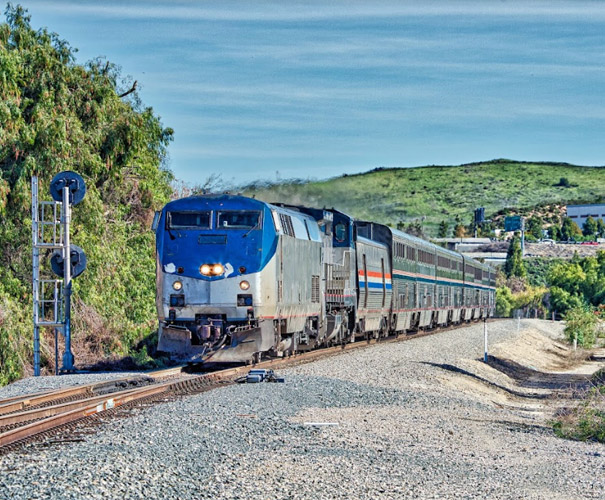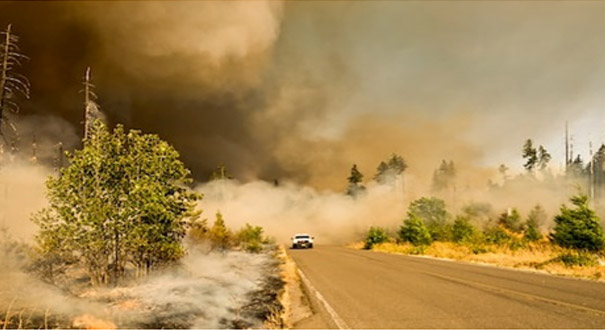Each one of those forms of transportation causes emissions of greenhouse gases and affects the climate.


Greenhouse gases and climate change are already affecting our transportation system. Flooding, wildfires, snow and ice storms, and mud slides have halted transportation on rail systems and roads.
In January 2021 a portion of California Highway 1 near Big Sur fell into the ocean after heavy rains. After hurricane Harvey in 2017 a portion of the rail service flooded in the Gulf. During a heatwave in 2021, parts of the I-5 in Washington State buckled stopping traffic. All of these road and rail issues were caused by the weather that has been affected by climate change.
Transportation of people is a large portion of the 33% of emissions in the US. This can be changed by carpooling and taking public transportation.
These modes of moving our goods across the nation rely on fossil fuels. We all know how bad fossil fuels cause emissions. These modes of moving our goods across the nation rely on fossil fuels. We all know how bad fossil fuels cause emissions. Moving people also relies on fossil fuels. Especially in rural areas, where there is no subway or public transportation is limited to inside the city.
But what can we do to change the amount of emissions from the transportation sector? We all need and want products.We all need to go to work, shopping, and other activities. How can we get them where they need to go in a clean energy way?
Solutions to the transportation emissions have been discussed and are being implemented.
Some of the solutions are:


Those are just some of the solutions needed. A major issue is the infrastructure. There needs to be charging stations along all major routes that can be combined with rest areas. That would allow people to charge their vehicles to move people and products across the nation.
Electric vehicle manufactures like Ford and others need to research and develop better longer lasting batteries for their electric models. This will reduce the dependence on fossil fuels thereby reducing greenhouse gas emissions from the transportation sector.
If we all do our part to reduce the emissions from transportation we can change the amount of effect those emissions have on our climate. Reducing these emissions will reduce the number and intensity of hurricanes, wildfires, snowstorms, and heatwaves.